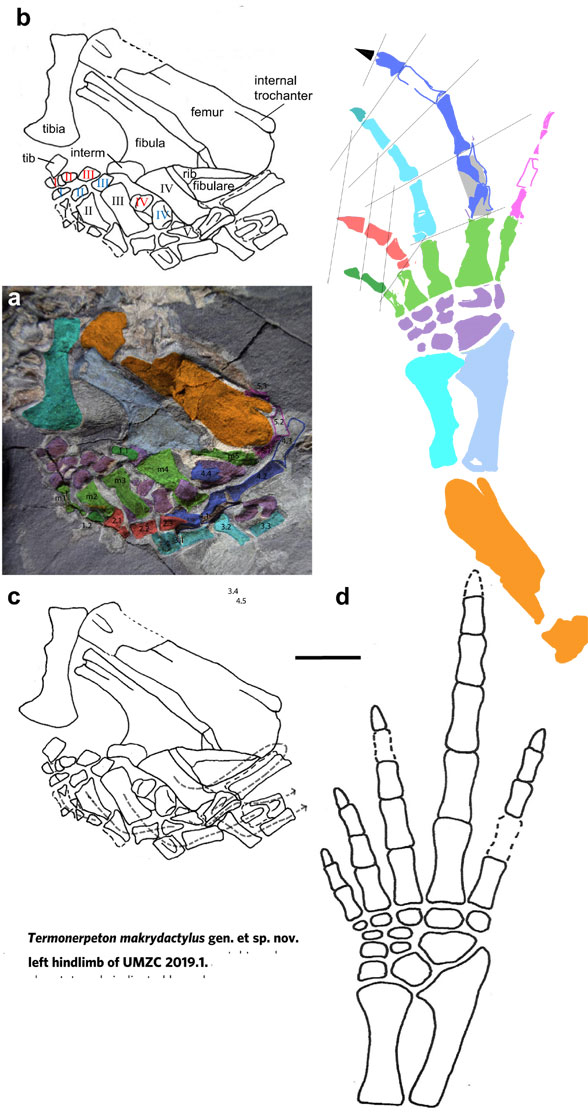Clack, Smithson and Ruta 2022 described
an Early Carboniferous, disarticulated, roadkill, back half of a tetrapod (UMZC 2019.1) they named Termonerpeton makrydactylus (Figs 1, 2).

The pelvis,
hind limb and a few vertebrae were all that were necessary to nest this fossil in the LRT. Reconstructing the color-segregated roadkill bits and pieces (Figs 1, 2) was essential.

Here
in the large reptile tree (LRT, 2081 taxa, Fig 3) Termanerpeton nests with a coeval Scottish neighbor, Caerorhachis (Fig 4).

Reptilomorpha must have appeared and radiated in the Late Devonian
based on the nesting of a Latest Devonian reptilomorph, Tulerpeton in the LRT.

In contrast to the fully resolved LRT,
Clack, Smithson and Ruta provided four less-than-resolved cladograms (Fig 5). In two of these Caerorhachis nests with Termanerpeton, matching the LRT. They were not able to more precisely nest their new roadkill taxon that to say in their headline that it was a ‘tetrapod’. Based on ten years of experience with the LRT, I can see the problem with the Clack, Smithson and Ruta cladograms comes down to taxon exclusion. Outgroup problems are also present due to taxon exclusion. Adding taxa resolves all such issues.

Whenever a dataset produces cladograms without complete resolution
(Fig 5) a problem is present. Taxa represented by too few traits should be deleted and more complete taxa should be added until the topology is settled (Fig 3). On the other hand, a completely resolved cladogram can also be imperfectly scored here and there. In any case, keep working on that cladogram, keep adding taxa to make it stronger. You’ll find your own LRT a powerful tool you can use to test published papers for decades to come.
References
Clack JA, Smithson TR and Ruta M 2022. A Mississippian (early Carboniferous) tetrapod showing early diversification of the hindlimbs. Nature communications biology 5:283 https://doi.org/10.1038/s42003-022-03199-x
